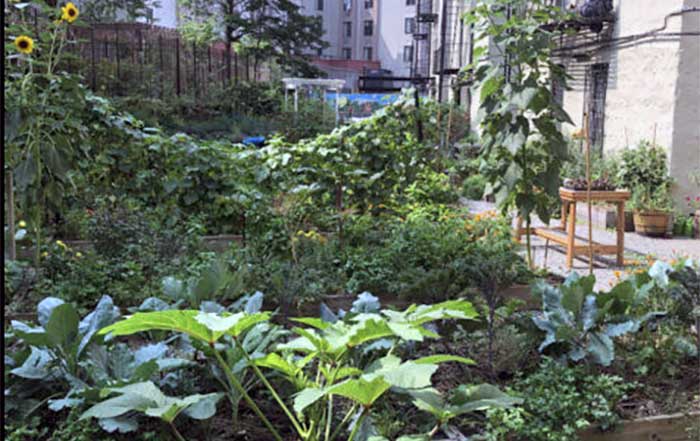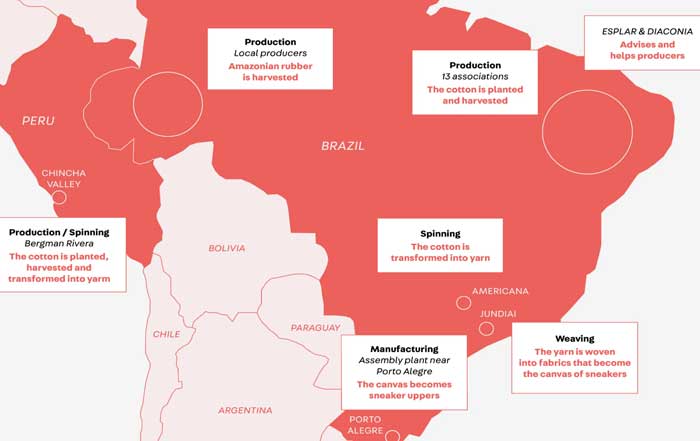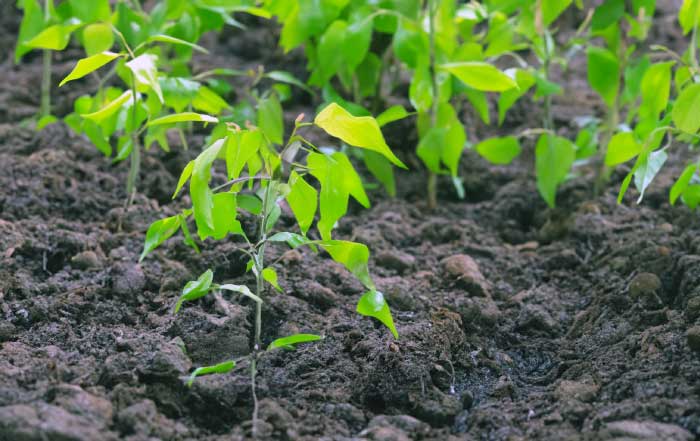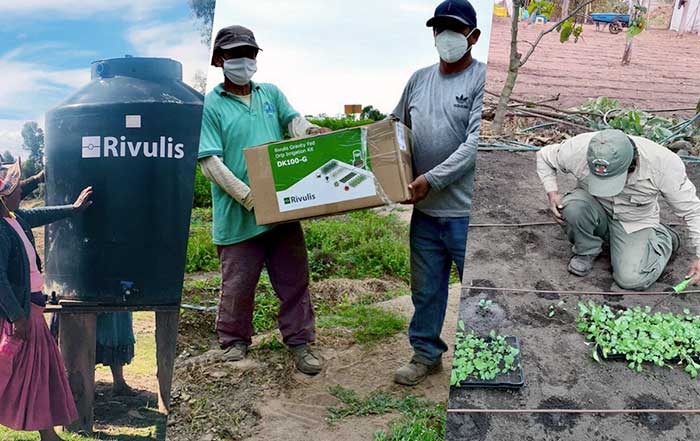As the global movement toward healthier, more sustainable lifestyles continues to grow, organic food producers have become critical players in shaping the way society consumes, farms, and connects with the environment. Among the most prominent companies leading this charge is Nature’s Path, a family-owned Canadian enterprise that has become synonymous with trust, transparency, and uncompromising commitment to organic agriculture. The rise of Nature’s Path and similar organizations reflects a broader transformation in consumer expectations, supply chain practices, and the global agricultural economy.
For eco-natur.com readers who are deeply engaged with sustainability and organic living, this story is not just about one brand but about the larger ecosystem of farmers, businesses, and conscious consumers working to redefine food culture. The movement touches on areas ranging from sustainable living and organic food to sustainable business practices and renewable energy. This article provides a comprehensive exploration of Nature’s Path and other innovators worldwide, focusing on how organic producers are responding to global demand, overcoming challenges, and paving the way for a healthier planet.
The Growth of Organic Food Demand
The organic food sector has expanded rapidly in the past two decades, moving from a niche market to a mainstream economic force. Consumers across the United States, United Kingdom, Germany, and beyond have demonstrated a growing willingness to pay premium prices for foods free from synthetic pesticides, genetically modified organisms, and artificial additives.
According to global industry reports, organic food sales now exceed $150 billion annually worldwide, with strong growth in both developed and emerging markets. This surge is fueled not only by rising health awareness but also by concerns over biodiversity, climate change, and ethical sourcing. Modern consumers are more likely than ever to research where their food comes from, and companies that embrace transparency are thriving.
As governments implement stricter labeling laws and more sustainable agricultural incentives, organic producers are positioned at the forefront of long-term food security strategies. Initiatives like the European Union’s Green Deal and increasing emphasis on soil health in North America underscore the systemic changes underway.
Nature’s Path: A Pioneer in Organic Food
Founded in 1985 in Vancouver, Canada, Nature’s Path has become one of the largest independent certified organic food brands in North America. Guided by the philosophy of “leaving the earth better than we found it,” the company has established itself as a leader not only in cereal and granola markets but also in broader organic packaged foods.
What sets Nature’s Path apart is its unwavering commitment to certified organic production, verified by organizations like Quality Assurance International (QAI). The company sources ingredients exclusively from farms that adhere to organic principles, avoiding synthetic fertilizers, herbicides, and genetically modified seeds. This approach resonates with global movements toward plastic-free lifestyles, ethical farming, and long-term ecological balance.
Beyond product lines, Nature’s Path invests significantly in initiatives such as farmland preservation, community outreach, and regenerative agriculture. The company has purchased and protected thousands of acres of farmland in North America, ensuring that future generations of farmers can continue cultivating organically.
Global Organic Producers: Building on the Movement
While Nature’s Path stands out in North America, similar companies across the globe are reshaping the organic food landscape.
Alnatura (Germany) has built a reputation as one of Europe’s most trusted organic food retailers, with its emphasis on biodynamic farming and community-driven supply chains.
Yeo Valley (United Kingdom) remains a leader in organic dairy, promoting soil regeneration and climate-positive farming practices.
Ekoland (Netherlands) focuses on providing everyday organic staples, ensuring accessibility for consumers seeking affordable options.
Lotus Foods (United States) has pioneered sustainable rice cultivation, supporting smallholder farmers in Asia through methods that conserve water and reduce methane emissions.
Biona Organic (United Kingdom) has become a household name for pantry staples that meet rigorous ethical and environmental standards.
Together, these brands illustrate the diversity of approaches within the organic movement, from family-run enterprises to large-scale cooperative ventures.
Challenges Facing Organic Food Producers
Despite strong growth, organic food producers face multiple challenges that require both innovation and resilience.
Supply Chain Constraints
Organic farming inherently produces lower yields compared to conventional methods due to restrictions on fertilizers and pest control. This creates supply chain bottlenecks, particularly for high-demand products like grains and nuts. Climate-related disruptions further complicate stability, highlighting the need for resilient economies.
Price Pressures
Organic products are often priced higher than conventional alternatives, making them less accessible for lower-income consumers. Although this reflects the true cost of sustainable farming, it poses a barrier to widespread adoption. Many companies are investing in efficiency improvements to bring down costs without compromising values.
Certification Complexity
Securing and maintaining organic certification involves rigorous documentation, audits, and compliance costs. For smallholder farmers in developing regions, this creates significant barriers. Global organizations like IFOAM – Organics International are working to streamline certification processes while maintaining integrity.
Competition and Market Consolidation
As demand rises, large multinational corporations are entering the organic sector through acquisitions and new product lines. While this expands distribution, it raises concerns about authenticity, quality dilution, and corporate greenwashing. Independent producers must compete not only on product quality but also on storytelling and brand trust.
Interactive Organic Food Evolution Timeline
Explore key milestones in the global organic movement
Select a milestone above to explore
Click on any year button to discover key developments in the organic food movement, from Nature's Path founding to future innovations in regenerative agriculture.
Sustainability at the Core
Organic food production is not only about healthier eating; it is deeply tied to broader sustainability goals. The principles of soil health, biodiversity, and carbon sequestration are embedded in organic standards, making these producers natural allies in the fight against climate change.
Nature’s Path and its peers are increasingly adopting regenerative practices that go beyond basic organic certification, focusing on carbon-positive farming, zero-waste packaging, and renewable energy in production facilities. These efforts align with eco-natur.com’s commitment to promoting sustainability, zero-waste living, and biodiversity conservation.
By integrating sustainability into every stage of their operations—from seed selection to distribution—organic producers demonstrate that profitability and environmental stewardship can coexist.
Technology and Innovation in Organic Food
The organic sector is no longer limited to traditional farming methods. Technology is playing a transformative role in making sustainable agriculture scalable and efficient.
Precision agriculture tools allow farmers to optimize irrigation and fertilization, reducing waste while preserving yields.
Blockchain traceability platforms enable transparent supply chains, allowing consumers to track the origin of their food.
Biological pest management solutions are replacing synthetic chemicals, protecting pollinators and wildlife.
E-commerce growth has expanded access to organic products worldwide, from major platforms like Amazon Fresh to specialized marketplaces like Thrive Market.
These advancements strengthen the link between sustainable lifestyles and consumer empowerment, ensuring that organic choices are both practical and impactful.
The Future of Organic Food Producers
Looking ahead to 2025 and beyond, organic food producers will continue playing a critical role in reshaping global food systems. As consumers demand transparency and climate accountability, companies like Nature’s Path and Alnatura will be expected to pioneer solutions in regenerative farming, waste reduction, and equitable trade.
Emerging markets in Asia, Africa, and South America will become important growth frontiers, particularly as middle-class populations expand and governments promote food security through sustainable agriculture. Organic food producers who adapt to local contexts while maintaining global standards will thrive.
Collaborations with renewable energy providers, investment in carbon farming, and integration with digital traceability systems will define the next chapter of the movement. For eco-natur.com readers, this evolution represents both a business opportunity and a moral imperative to support organizations that embody the principles of sustainability, resilience, and ethical food production.
The journey of organic food producers, from pioneers like Nature’s Path to a global network of innovators, reflects humanity’s growing recognition that food is not just a commodity but a fundamental link between people and planet. As society confronts environmental crises, organic agriculture offers a proven pathway toward restoring ecosystems, improving human health, and strengthening rural economies.
For businesses, governments, and consumers alike, supporting organic producers is more than a lifestyle choice—it is an investment in a future where nature and commerce coexist harmoniously. By embracing sustainable living, encouraging organic food, and championing sustainable business, the global community has the power to drive meaningful change.
The story of Nature’s Path and its peers is not just about breakfast cereals or granola bars. It is about proving that when integrity and innovation come together, businesses can leave the world better than they found it.
Regional Dynamics in Organic Food Production
The global organic food sector is shaped by regional dynamics that highlight cultural preferences, regulatory frameworks, and market maturity. While the fundamental principles of organic agriculture remain consistent, the way producers and consumers approach the sector varies across continents.
North America: A Mature Market with Consolidation Pressures
In the United States and Canada, organic food has evolved from a niche segment into a mainstream category available in nearly every supermarket. Retail giants like Whole Foods Market and Kroger now dedicate significant shelf space to organic products, while private-label organic offerings have become a competitive battleground. Nature’s Path, headquartered in Canada, thrives in this landscape by maintaining independence and authenticity, contrasting with multinational corporations that often enter through acquisitions.
Consumer demand in North America is particularly strong in metropolitan areas such as New York, Los Angeles, Toronto, and Vancouver, where health-conscious populations drive trends toward plant-based diets and organic staples. However, the maturity of the market also presents consolidation pressures, as independent producers struggle against cost efficiencies achieved by larger players. This challenge reinforces the importance of brand storytelling and consumer trust, key differentiators for companies like Nature’s Path.
Europe: Policy-Driven Growth
Europe remains a leader in organic food adoption, supported by strong policy frameworks and consumer awareness. Countries like Germany, France, and the United Kingdom have established robust organic certification systems, while the European Union’s Farm to Fork Strategy sets ambitious goals for reducing chemical pesticide use and increasing organic farmland.
European producers like Alnatura in Germany and Bjorg Bonneterre et Compagnie in France align closely with government incentives and consumer demand. Supermarkets in these regions frequently highlight organic options, and public institutions increasingly integrate organic food into school lunch programs and healthcare facilities. The European approach illustrates the close alignment between public policy, private enterprise, and societal health outcomes.
Asia: Emerging but Fast-Growing
In Asia, the organic sector is rapidly gaining traction, particularly in urban centers of China, Japan, South Korea, and Singapore. Rising middle-class incomes, food safety concerns, and globalized trade have created fertile ground for organic adoption.
China, once plagued by food safety scandals, has seen growing consumer trust in certified organic products, both domestically produced and imported. Meanwhile, Japan’s Oisix Ra Daichi has carved out a reputation as a reliable supplier of organic meal kits, tapping into the country’s strong demand for convenience without sacrificing quality. In Thailand and Vietnam, government-backed initiatives encourage smallholder farmers to adopt organic practices, positioning the region as both a producer and consumer hub for the future.
Africa and South America: Unlocking Potential
Regions like Africa and South America hold significant potential for organic agriculture due to their biodiversity and traditional farming practices that often align with organic principles. South Africa has developed export-oriented organic farms, particularly in fruits and wines, while Brazil has positioned itself as a key supplier of organic coffee, sugar, and tropical fruits.
In Africa, smallholder farmers in Kenya, Uganda, and Tanzania are integrating organic practices with support from non-governmental organizations and international development programs. While challenges remain in certification and infrastructure, these regions may become vital suppliers in the global organic chain, particularly as climate resilience becomes a priority.
Consumer Behavior and Organic Food
The organic food movement thrives not only on supply but also on changing consumer behavior.
Health and Wellness Priorities
The rise of lifestyle-related diseases such as obesity, diabetes, and cardiovascular conditions has prompted consumers to prioritize healthier eating habits. Organic food, perceived as cleaner and more nutritious, is often the first choice for families looking to reduce exposure to synthetic chemicals. For many, organic consumption is also tied to a broader embrace of healthy lifestyles and wellness routines.
Ethical and Environmental Consciousness
Consumers increasingly link their food choices with their values. Organic food aligns with ethical considerations such as animal welfare, climate action, and biodiversity preservation. The decision to purchase organic is often as much about protecting ecosystems and supporting farmers as it is about personal health. Eco-conscious shoppers also tend to embrace complementary practices such as zero-waste living and plastic-free alternatives.
Transparency and Trust
Transparency is a cornerstone of consumer trust in organic producers. Labels like USDA Organic, EU Organic, and Canada Organic offer reassurance, but consumers often seek deeper information through online resources, traceability apps, and direct farm-to-consumer relationships. Brands that communicate openly about sourcing, farming practices, and environmental impacts stand out in an increasingly competitive market.
Case Study: Nature’s Path and Regenerative Agriculture
Nature’s Path is not content with simply meeting baseline organic standards—it has actively embraced regenerative agriculture, a holistic approach that restores ecosystems while producing food. Regenerative practices include cover cropping, composting, rotational grazing, and agroforestry.
In recent years, Nature’s Path has invested in projects that measure and improve soil carbon sequestration, turning farms into net absorbers of greenhouse gases rather than emitters. This approach aligns with global efforts to combat climate change and positions the company as a thought leader in sustainable farming.
Moreover, Nature’s Path has partnered with local communities to establish Organic Regenerative Transition Grants, supporting farmers who wish to shift from conventional to regenerative organic practices. These initiatives not only expand the availability of organic products but also create ripple effects in biodiversity and rural economic resilience.
Packaging and Waste Reduction Initiatives
Sustainability in the organic food industry extends beyond farming into packaging and distribution. As concerns about plastic pollution intensify, organic producers are leading in innovation with biodegradable, compostable, and recyclable packaging.
Nature’s Path has pledged to make all of its packaging reusable, recyclable, or compostable by 2025. Similarly, European companies such as Alnatura and Bio Company in Germany are experimenting with bulk refill stations and paper-based packaging to reduce reliance on plastics. These efforts resonate strongly with the ethos of recycling and circular economies promoted on eco-natur.com.
For consumers, packaging innovation is often a visible sign of a brand’s authenticity and alignment with environmental values. By reducing waste at the retail and household levels, organic producers demonstrate that responsibility extends across the entire value chain.
Policy and Regulation: Driving the Future of Organic
Public policy plays an essential role in shaping the trajectory of organic food markets.
Subsidies and Incentives
In the European Union, farmers transitioning to organic practices benefit from subsidies that offset the costs of certification and yield reductions. Similar programs exist in Canada and selected U.S. states, though critics argue that conventional agriculture still receives disproportionate government support.
Labeling Standards
Regulatory clarity is vital for consumer trust. The USDA Organic Seal and the EU Organic Logo are globally recognized, but new standards like Regenerative Organic Certification are emerging to differentiate companies that go beyond organic. Clearer labeling not only protects consumers but also levels the playing field for authentic producers.
Climate and Biodiversity Policies
Organic agriculture is increasingly linked to climate strategies. Governments are recognizing that organic farms, with their emphasis on biodiversity and soil health, can play a significant role in carbon reduction goals. Policies that integrate food systems into climate frameworks are expected to expand in Germany, France, Canada, and Japan, creating favorable environments for organic producers.
Expanding Access to Organic Food
One of the key challenges for the organic food sector is making products accessible to a wider audience.
Community-Supported Agriculture (CSA) models allow consumers to purchase shares in local farms, receiving seasonal produce directly while supporting small-scale growers.
Online marketplaces like Thrive Market and Imperfect Foods make organic staples available at discounted rates, addressing affordability concerns.
Urban farming initiatives in cities like London, New York, and Singapore use hydroponics and rooftop gardens to bring organic production closer to consumers.
School programs in Italy, Sweden, and South Korea integrate organic meals into children’s diets, fostering early adoption and generational shifts in eating habits.
Expanding access is essential for ensuring that organic food is not perceived as an elite luxury but as a basic component of sustainable living.
Innovation Case Studies in Organic Food Production
The organic sector’s momentum is being fueled by a new wave of innovation that blends ancient farming wisdom with cutting-edge technology. Case studies across the globe demonstrate how organic food producers are experimenting with models that not only sustain profitability but also amplify ecological and social benefits.
Lotus Foods: Water-Saving Rice Cultivation
Lotus Foods, based in the United States, has built its brand around sustainable rice sourced from smallholder farmers in Asia. Its hallmark innovation is the System of Rice Intensification (SRI), a cultivation method that reduces water usage by up to 50% and methane emissions by nearly 40%. The approach has enabled farmers in countries like Cambodia, India, and Indonesia to increase yields while conserving critical natural resources.
Lotus Foods illustrates how an organic brand can become an advocate for climate-smart agriculture, influencing global conversations about food security and sustainability. Their work underscores the interconnectedness of sustainable business practices, climate resilience, and rural empowerment.
Yeo Valley: Organic Dairy and Carbon Farming
In the United Kingdom, Yeo Valley has revolutionized the organic dairy sector by embracing regenerative carbon farming. The company invests in hedgerow planting, rotational grazing, and soil carbon measurement programs that position their farms as carbon sinks. Yeo Valley has also partnered with research institutions to test innovations in organic livestock management, aiming to reduce methane emissions from dairy herds.
Their transparent storytelling and consumer engagement strategies highlight how authenticity, combined with scientific rigor, can build brand loyalty in a crowded marketplace.
Oisix Ra Daichi: Organic Meal Kits in Japan
In Japan, Oisix Ra Daichi demonstrates how consumer convenience can align with sustainability. By offering meal kits that feature certified organic produce and transparent sourcing, Oisix has tapped into Japan’s culture of efficiency while reinforcing food safety. The company integrates digital platforms to trace produce back to farmers, reinforcing trust in a region sensitive to food scandals.
Oisix’s success reveals the potential of digital transformation in the organic sector, particularly in markets where urban lifestyles demand convenience without compromise.
Collaborations and Partnerships Driving Impact
Organic producers increasingly recognize that collaboration is essential for scaling impact. Partnerships across industries, governments, and non-profits are shaping a more resilient and inclusive ecosystem.
Farmer Cooperatives
In regions like South America and Africa, farmer cooperatives have become essential vehicles for scaling organic production. By pooling resources, farmers can access certification, training, and global markets that would otherwise remain out of reach. Organizations such as Fairtrade International and Rainforest Alliance often collaborate with cooperatives to ensure that environmental and social standards are upheld.
Cross-Industry Collaborations
Partnerships between organic producers and renewable energy providers are reshaping sustainability commitments. For example, several European organic producers have entered agreements with solar and wind energy companies to fully decarbonize their operations. This integration reflects the synergy between renewable energy adoption and food system transformation.
NGO and Government Alliances
Non-governmental organizations and government agencies play an important role in supporting organic transitions. Programs like USAID’s Feed the Future, the European Union Horizon Fund, and the UN Food and Agriculture Organization (FAO) provide technical assistance and funding for farmers worldwide. By partnering with NGOs, organic brands extend their impact beyond profitability into community development and ecosystem restoration.
Investment and Financing Trends in Organic Food
The growth of organic food is not only a consumer trend but also a magnet for investment. Financial markets are increasingly recognizing organic producers as critical players in the transition to sustainable economies.
Venture Capital and Private Equity
Investors see organic producers as both profitable and socially responsible opportunities. Venture capital has flowed into startups offering plant-based organic foods, regenerative agriculture platforms, and organic e-commerce ventures. Private equity firms are acquiring established organic brands to expand global distribution networks, though this also raises concerns about consolidation and mission dilution.
Impact Investing
The rise of impact investing aligns perfectly with the organic sector. Funds dedicated to environmental, social, and governance (ESG) outcomes often prioritize organic agriculture due to its measurable benefits for biodiversity, soil health, and rural livelihoods. This trend provides new financing options for small and medium-sized organic enterprises that might otherwise struggle against conventional agribusiness giants.
Public Markets and Consumer Advocacy
Companies like Hain Celestial Group and Danone’s organic subsidiaries have been listed on public markets, drawing attention from institutional investors. At the same time, consumer advocacy has pressured publicly traded firms to remain accountable for their sustainability claims. This dual pressure—from investors and consumers—creates fertile ground for innovation and transparency.
Predictions for the Next Decade of Organic Food
Looking ahead, the trajectory of organic food producers points to a decade of deeper integration with climate strategies, technological transformation, and social justice.
Regenerative Organics as the New Standard
Organic standards alone will no longer be sufficient. By 2030, regenerative organics that explicitly measure carbon sequestration, biodiversity outcomes, and water use efficiency are likely to become the industry benchmark. This shift will require producers to adopt advanced monitoring systems, including satellite imaging and AI-powered soil health assessments.
Democratization of Access
The perception of organic food as a luxury item will diminish as innovation in production, distribution, and financing drives affordability. Discount retail chains in the United States and Europe are already expanding organic lines, while direct-to-consumer platforms ensure fairer prices for both farmers and shoppers. Governments in Asia and Africa are expected to expand subsidies and public procurement of organic food, embedding it in national nutrition strategies.
Integration of Digital Tools
Digital platforms will redefine consumer interaction with organic brands. Mobile applications enabling real-time traceability, personalized nutrition advice, and interactive farming updates will bridge the gap between producer and consumer. By 2035, digital engagement may become as important as physical product quality in shaping consumer loyalty.
Climate Adaptation and Resilience
Organic producers will emerge as critical partners in global climate adaptation strategies. With their expertise in resilient farming systems, they will help safeguard food supplies against extreme weather events, soil degradation, and biodiversity loss. International agreements like the Paris Climate Accord and COP commitments will continue to amplify the role of organic agriculture in meeting climate goals.
The Role of Consumers: Driving the Movement Forward
Ultimately, the success of organic food producers depends on consumer choices. By supporting authentic, transparent, and sustainable brands, consumers create the demand that sustains organic farming communities worldwide.
Shoppers who prioritize organic food also tend to engage in broader sustainable practices such as recycling, sustainable living, and protecting wildlife. These behaviors reinforce a cultural shift where food is not simply a personal preference but part of a global sustainability movement.
Through consumer advocacy, social media engagement, and grassroots activism, everyday citizens have already shaped the trajectory of the organic food sector. Moving forward, they will continue to hold producers accountable while celebrating brands that deliver genuine environmental and social value.
Final Reflections
The story of Nature’s Path and the broader community of organic food producers is a testament to the power of vision, integrity, and innovation. What began as a countercultural movement has matured into a global economic force, reshaping how societies grow, distribute, and consume food.
As the world faces unprecedented ecological and social challenges, organic producers stand at the forefront of building resilient, fair, and climate-conscious food systems. By aligning profitability with principles of sustainability, biodiversity, and economy, they provide a model for businesses across industries.
For eco-natur.com readers, supporting organic food producers is more than a dietary decision—it is a commitment to shaping a healthier planet and future. Every purchase, every partnership, and every policy shift strengthens the global movement toward sustainability. The journey of organic food is still unfolding, but one truth is clear: it is a journey worth taking together.








